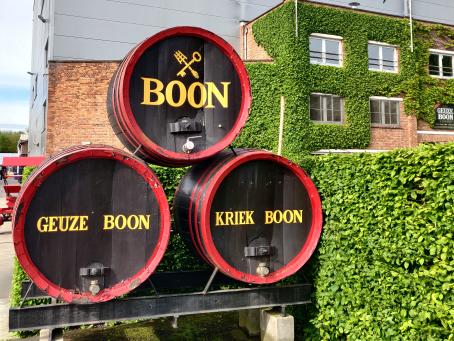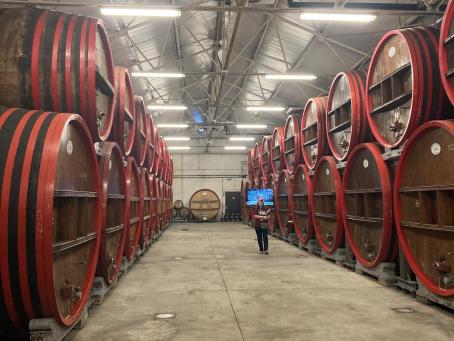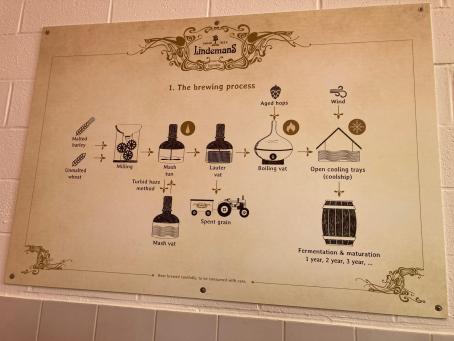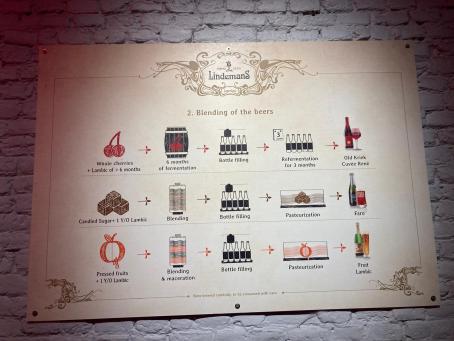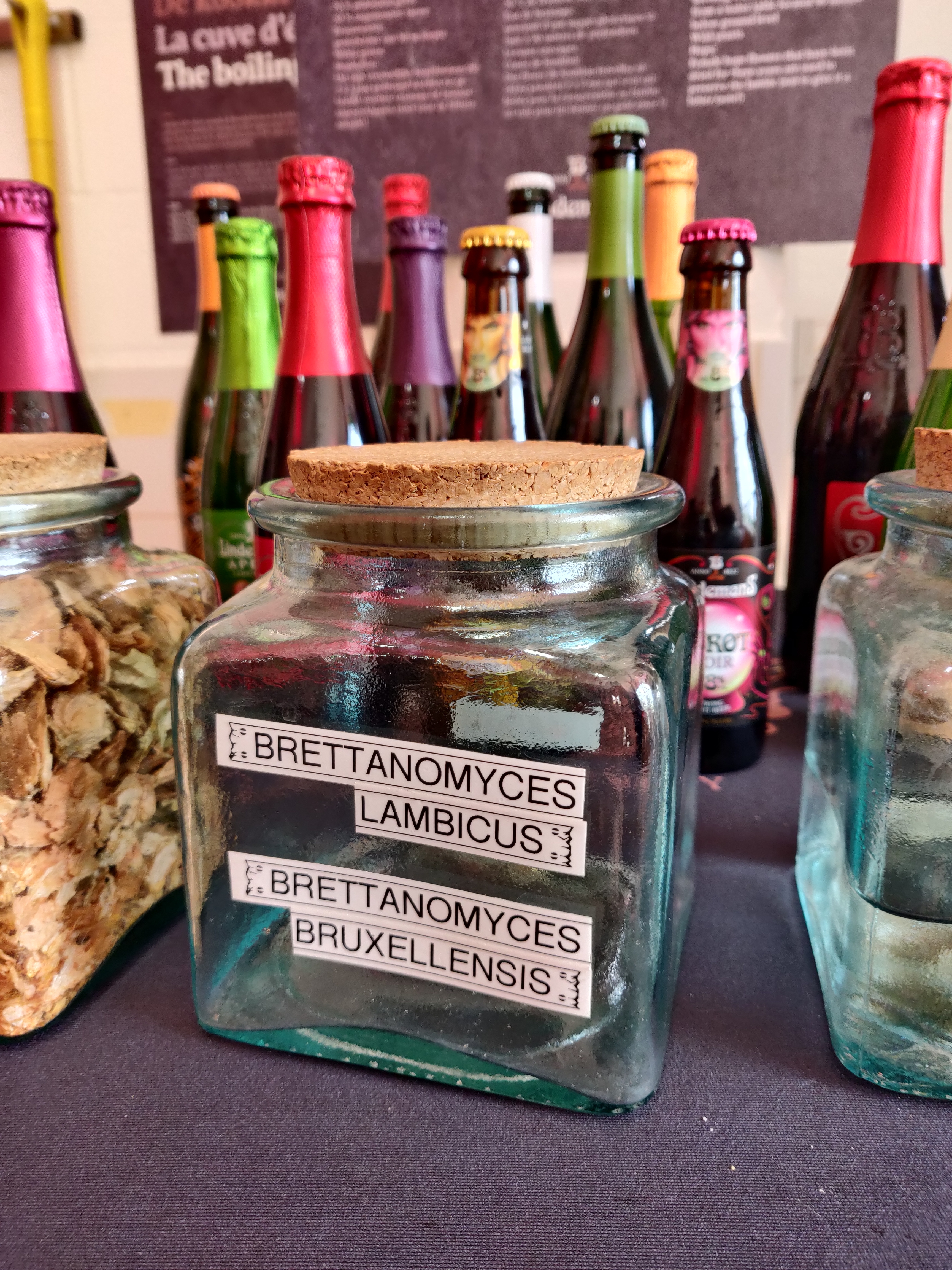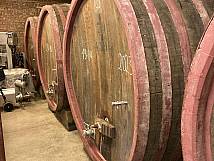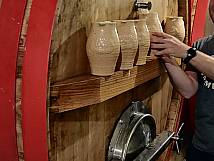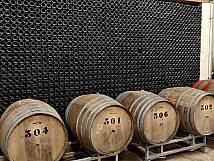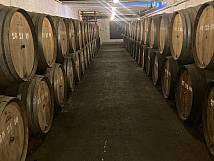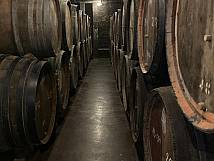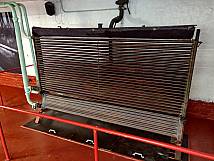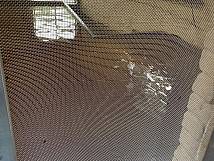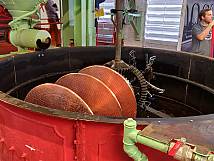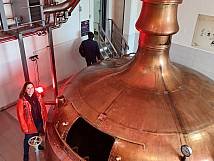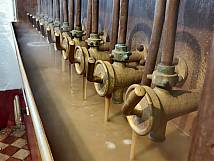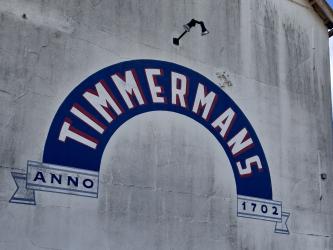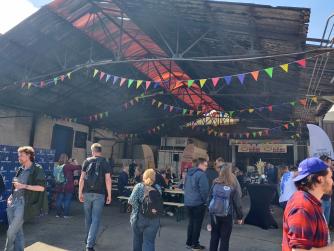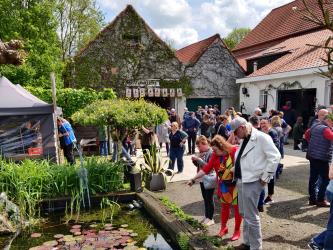Mystical beers from the Pajottenland - Toer de Geuze 2024
Lambic and Geuze are to Brussels what Helles and Weissbier are to Bavaria. Few regions are as proud of their cultural beer heritage as the Pajottenland, a fertile, agricultural region south-west of Brussels in the province of Flemish Brabant. Beer lovers consider these beers to be particularly delicate, but also demanding. Spontaneously fermented sour beers are not to everyone's taste, but offer a complex variety of flavour impressions.
Beer lovers from all over the world flock to the region every two years to explore authentic Lambic and Geuze beers. This is when the members of HORAL (De Hoge Raad voor Ambachtelijke Lambiekbieren) open their brewery gates to reveal the mystique surrounding these spontaneously fermented beers.
In addition to entertainment for the whole family, the breweries also offer all kinds of insights into the production of authentic Geuze beers. Reason enough for the European Beer Star to take a look behind the scenes.
What is Lambic?
Lambic is a traditional Belgian beer known for its unique flavours and complex production method. Originally, the beer was brewed in the winter months by farmers in the Brussels region. The beers were then brought to the city where they matured and were enobledby an own craft occupation, the "blenders". Originally - similar to Scottish whisky production - the professions of brewer and blender were separate. Since 1997, Lambic and Geuze have been a food speciality protected by the European Union (Traditional Speciality Guaranteed (TSG)). If you would like to find out more about the history of the beer style, we recommend the interesting article by the Brewery History Society.
The aim of the European Beer Star is to promote genuine beer styles as well as their tradition and originality. It was therefore only logical that the EBS, in collaboration with HORAL, revised the description of Belgian-style Geuze this year. The result of this work can be found in the category descriptions.
As part of the collaboration, Frank Boon invited the organisers of the European Beer Star to the Toer de Geuze and a visit to Brouwerij Boon. The visit to the brewery was pure knowledge transfer. A big thank you to Frank, Jos and Karel Boon for their hospitality and the in-depth insights into the production of Geuze. The following information on the production of the Belgian beer speciality comes from the visit to the Boon family.
Production Method
The illustrations below from the brewhouse at Lindemans Brewery clearly summarise the brewing process as well as the blending process for various Lambic and Geuze specialities:
In addition to water and barley malt, unmalted wheat and aged hops are also used as raw materials. This sounds a little strange at first glance, but there are perfectly plausible reasons for this:
Why is the wheat unmalted? In contrast to its state after germination, unmalted wheat has a lower content of ferulic acid, the precursor of 4-vinylguaiacol, which is responsible for phenolic flavour perception (cf. German wheat beers), which is not desirable in excess in Lambic.
Why are hops aged? The purpose of hops in Lambic beers is not to impart bitterness or flavour, but to increase shelf life. The β-acids of the hops are particularly important here. Of course, the hops should be aged in a controlled manner and a cheesy odour caused by the isovaleric acid should be avoided.
The beers are produced using the turbid haze method - again with the aim of avoiding the formation of 4-VG. To the surprise of German brewers, iodine normality is not as important as one would expect for German-style beers. This is due to the yeasts that are responsible for the fermentation process. In contrast to many other beer styles, Lambic beers are fermented spontaneously. After the boiling process, the wort is transferred to the coolship, where the wort comes into contact with the ambient air and is incubated during the cooling process, which should take place in as short a time as possible. Brettanomyces Bruxellensis and Brettanomyces Lambicus in particular, but also Saccharomyces yeasts and Pediococci determine the fermentation process. The mysticism takes its course... And the Lambic brewers know exactly what they are doing. This is because the provision of food (substrate) must be right in order to respond for the versatile microbes and their biotransformations. This is regulated by the brewhouse work. As Brettanomyces yeasts in particular can ferment almost all types of sugars at different speeds and the storage of Lambic can take place over several years, substrate must also be available for the long run. Therefore, in addition to mono- and disaccharides, oligo- and polysaccharides are also required after the mashing process. And that is the reason why Belgian Lambic brewers are not at all angry with a positive iodine sample before casting out of the brewhouse. The "raw material" yeast was presented in a very practical way at Lindemans :-)
In principle, brewhouse work in many of the Geuze breweries is still very much characterised by craftsmanship, as the following clips illustrate.
Sensory changes due to ageing in wooden barrels
After resting on the coolship and separating the trub in a settling tank, the Lambic beers are placed in oak barrels, where the beers must be stored for at least 6 months before they can be marketed as Lambic beers. The beers are matured for several years. A constant reduction in residual extract can be observed over time. The flavour profile of the Lambic beers therefore also changes with the maturation period. In addition to sugar degradation, esterification reactions also occur. Of particular note here is the formation of lactic acid esters, which give Lambic beers a fruity complexity in flavour. Similar to German lager beers, young Lambic beers can also contain sulphur notes, which are degraded over time. However, wooden barrel ageing is also noticeable and barrique flavours can also be found in the beer. It can therefore be said that young Lambic beers are sweeter than their longer-matured counterparts and that the acidity as well as the complexity and depth of the beers increase over time. The acidity should always be elegantly embedded. Acetic acid is present to a certain extent in Lambic beers, but should not be evident in the flavour. This is the reason why oxygen should also be avoided in Lambic breweries during the fermentation and maturation period. As a result, the wooden barrels are filled to the very top with the precious content.
And how does Lambic become a Geuze?
Much has been said about Lambic beers, but what is Geuze? Lambic beers are actually similar to Zwickl beers. Lambic beers are served directly from the wooden barrel and are therefore not available in bottles. The Lambics available on the market are flavoured with fruit, for example:
- with whole sour cherries; the drink is then called Kriek
- with whole raspberries; Framboise
- with pressed fruit; Fruit Lambic
but modern interpretations with other fruits are also on the market (a rhubarb beer is particularly memorable to the author).
Geuze, on the other hand, is a mixture of young and matured Lambic beers that are bottled and fermented there. The task of the young Lambic is to provide the substrate for the secondary fermentation, while the matured Lambic adds complex flavours to the blend. This is the task of the experienced Geuze blender. The result is a crispy and complex beer with a lively efferescence and refreshing acidity.
With the concentrated knowledge about production, we were able to continue tasting the various delicacies. And on the following day, the actual bus tour was still waiting...
Toer de Geuze 2024
The Toer de Geuze is a great opportunity to visit the breweries that produce these traditional beers and take a look behind the scenes of their production. All participating breweries open their doors, with the brewery courtyards taking on the appearance of a festival site, a funfair or a cosy neighbourhood get-together. One thing is for sure: you certainly won't get bored.
Horal has been organising the Toer de Geuze every two years since 1997. 13 member breweries take part. The various breweries are visited by coach, but can also be visited individually, so some of the visitors take the chance to do an extensive cycle tour. Four breweries are visited by bus on one day, making it impossible to visit all the breweries in one day - a recipe for success, as many of the more than 8,000 visitors were not at Toer de Geuze for the first time. Most visitors come back again and again because there is something new to discover every time. The author had the opportunity to visit Lindemans, Timmermans, Hanssens and Oude Beerzel. The bus tour started at the railway station in Halle.
At Lindemans, visitors can experience the art of adding fruit to Lambic. This brewery is known for its Kriek (cherry) and Framboise (raspberry) beers, but its creative reinterpretations and collaborations have also made the brewery an internationally renowned name. The brewery really spruced up for the event. Visitors were able to enjoy live brewing, taste Lambics with different maturation periods and even mix their own Geuze.
Timmermans is one of the oldest Lambic breweries in Belgium and stands for tradition and craftsmanship. And they proved this with live brewing using their machines, which would be exhibited as museum pieces elsewhere. In the picture gallery you will find some impressions of the brewing process at Timmermans and Lindemans. Visitors were also able to draw the beer themselves at Timmermans and enjoy the day with good food and drink in a party atmosphere in the brewery courtyard.
Things were a little quieter at Hanssens. Hanssens is known for its unusual approach to Geuze production. Instead of using a mixture of young and matured Lambics, they only use matured beers, which results in a more intense and complex flavour. The exceptional specialities could be tasted in a cosy garden atmosphere.
At Oude Beerzel, visitors were taken on a guided cellar tour with a tasting of jam made in-house (rhubarb and cherry). At the end of the tour, the orchard with its barbecue aromas, fairground sounds and delicious home-made creations invited guests to round off the day in a cosy atmosphere before the bus returned to Halle station.
Acknowledgement
The Toer de Geuze 2024 is not only an opportunity to taste some of Belgium's best beers, but also a journey through the history and tradition of Lambic and Geuze beer. It's an opportunity to get to know the people behind these unique beers and experience the passion they put into their work. The European Beer Star and the author would like to thank HORAL for their active support in revising the Geuze category description. Special thanks go to the Boon family for their proactive assistance and the invitation to the Toer de Geuze 2024.
A visit to the heart of Europe would not be complete without a visit to the European Parliament. We can only recommend a visit to Brussels and the Toer de Geuze to everyone. It is well worth it!
Kilian Kittl



